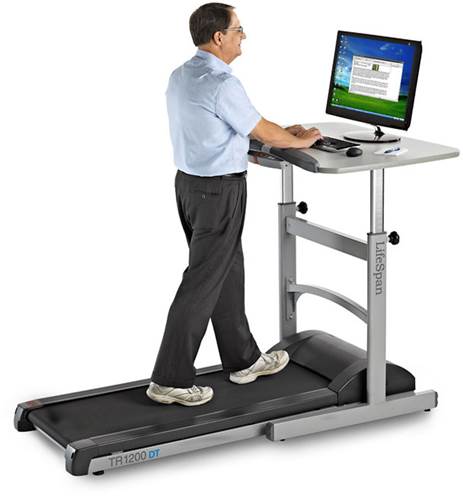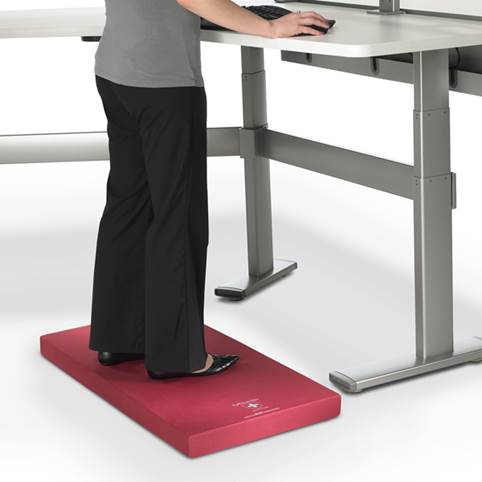Desk arrangement
Assuming you remain stationary while
working, there’s more to consider than only the height of the desk. You’ll also
want to make sure that the equipment on your desk is positioned ergonomically.
Our first piece of advice here is to use a desktop computer if possible, rather
than a laptop; the smaller keyboards and low-down screens of laptop hardware
can cause you to hunch forwards, spoiling the postural benefits that a standing
desk is supposed to provide.

Our
first piece of advice here is to use a desktop computer if possible, rather
than a laptop
“If you’re hunched forwards then that makes
you more likely to get a shoulder injury,” advises Dr. Outhwaite. “Sunken
monitors aren’t good, and a lot of problems come from people using laptops.
That can create catastrophic spinal and thoracic problems; if you’re going to
use a laptop then it needs to be mounted properly so that you aren’t hunched
over it.”
If you must use a laptop then try to use an
external keyboard and screen, which will give your hands more space to move
around and enable the screen to be optimally positioned. Ideally, regardless of
what sort of computer screen you’re using, it should be positioned directly in
front of you so that your eyes naturally look at the center of the display.
Avoid setups that sink your monitor below eye level. Looking downwards from
time to time won’t do you any harm, but doing so for hours on end on a daily
basis can lead to headaches and neck pain.

If
you must use a laptop then try to use an external keyboard and screen, which
will give your hands more space to move around and enable the screen to be
optimally positioned.
It’s a similar situation with the keyboard,
which should be positioned on a standing desk so that your arms bend
approximately 90 degrees at the elbow. If the keyboard is much higher or lower
than this then your wrists will have to bend awkwardly to reach the keyboard,
potentially leading to strain injuries. An ideal standing desk will let you
configure a keyboard and mouse shelf separately, as well as offering enough
room on the surface to comfortably support your forearm.
Think about your position under the desk,
as well as above it. Standing up all day can easily result in foot and leg ache
if you aren’t careful, especially when you’re first getting used to it. It’s
important to stand in a way that provides support and balances your body. You
may naturally want to rest one foot and put your weight on your dominant leg
while working, but doing this for too long can fatiguing.
Your default stance should be level and
upright; imagine a straight line passing from your head through your shoulders,
hips and knees.

Anti-
fatigue mats help to improve circulation due to their irregular surfaces
Your feet should be properly supported,
too, ideally by an anti-fatigue mat. Usually made of rubber, these mats cushion
the soles of your feet; at the same time, their irregular surfaces encourage
you to shift your weight around periodically by focusing pressure.
“Many problems stem from people remaining
in one position,” says Dr. Outhwaite. “Some of the patients I’ve treated get so
wrapped up in their work that they’ll just stay there, sitting or standing
until their neck switches off.
“You have to find some way of breaking that
habit, even if it’s artificially crashing the computer. The human body isn’t
designed to be stuck in one position like that for hours on end. You’ll get a
stiff neck and that nerve pain can go down into the arms and wrists, as well as
causing tears in the muscles because your body isn’t meant to hold a position
like that.”
Finally and most importantly, the same
general advice for seated computer users holds true for those standing. It’s
important to take regular breaks away from your computer at least every 40
minutes and perform basic stretches that let you use different muscles and
relax the strained ones. The problem with sitting at a desk all day isn’t
principally the position you adopt or the desk at which you’re sitting – it’s
the fact that you’re there all day. Something as simple as periodically going
off to fetch a glass of water can be enough or why not go for a walk around the
black? The encouragement to keep moving may be the greatest benefit of a
standing desk.